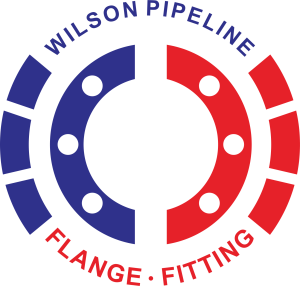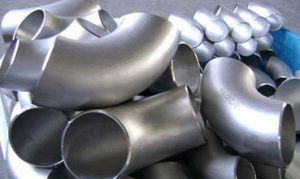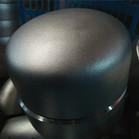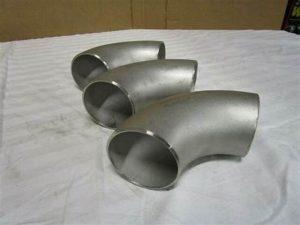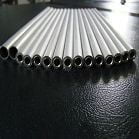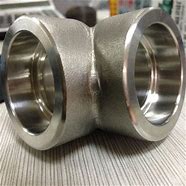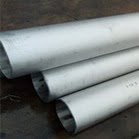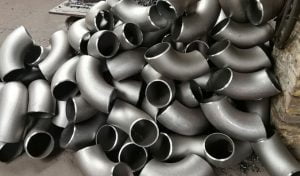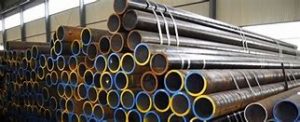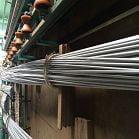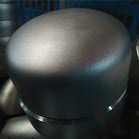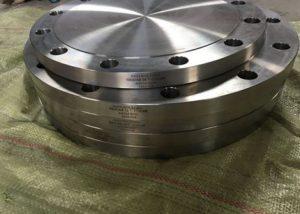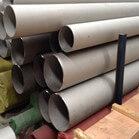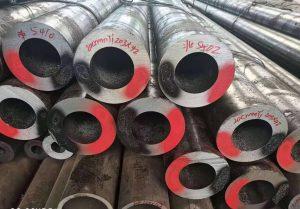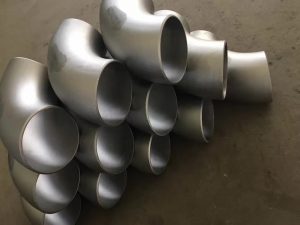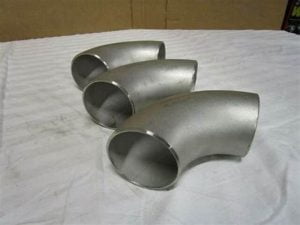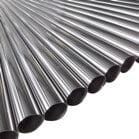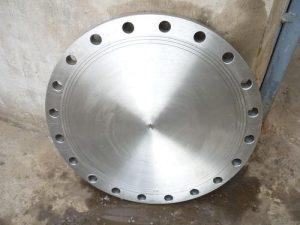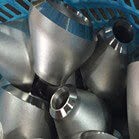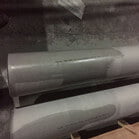How does F316TI compare to other types of stainless steel?
F316TI is a type of austenitic stainless steel that is commonly used in high-temperature and corrosive environments. It is a low-carbon version of F316 stainless steel, which contains molybdenum for improved corrosion resistance.The chemical composition of F316TI stainless steel includes:- Chromium (Cr): 16.0-18.0%- Nickel (Ni): 10.0-14.0%- Molybdenum (Mo): 2.0-3.0%- Titanium (Ti): 5x(C+N)-0.70% max- Carbon (C): 0.08% max- Silicon (Si): 1.00% max- Manganese (Mn): 2.00% max- Phosphorus (P): 0.045% max- Sulfur (S): 0.030% maxThe addition of titanium to F316TI stainless steel provides it with [...]
What are the advantages of using F316TI over F316 in high-temperature applications?
F316TI stainless steel offers several advantages over F316 stainless steel in high-temperature applications, including:1. Improved corrosion resistance - F316TI stainless steel contains titanium, which improves its resistance to sensitization and intergranular corrosion compared to F316 stainless steel. This makes F316TI more suitable for use in high-temperature environments where corrosion is a concern.2. Better high-temperature strength - F316TI stainless steel has better high-temperature strength than F316 stainless steel due to its lower carbon content and the addition of titanium. This means that F316TI can [...]
How does the cost of F316TI compare to F316?
The cost of F316TI stainless steel is generally higher than the cost of F316 stainless steel due to the addition of titanium, which is an expensive alloying element. The exact cost difference may vary depending on several factors such as the supplier, the quantity ordered, and the current market conditions.However, the cost difference may be offset by the improved performance and longer service life of F316TI stainless steel in high-temperature and corrosive environments, which can result in overall cost savings over time.Overall, the [...]
What are the most common welding techniques used for 31803 duplex stainless steel?
The most common welding techniques used for 31803 duplex stainless steel include:1. Gas tungsten arc welding (GTAW) - also known as TIG welding, is a high-quality welding process that produces precise and clean welds. GTAW is commonly used for thin sections and delicate structures, and it provides excellent control over the heat input.2. Gas metal arc welding (GMAW) - also known as MIG welding, is a versatile welding process that is commonly used for thicker sections and larger components. GMAW produces high-quality welds [...]
What are some other types of pipe fittings?
WPB B16.5 is a type of pipe fitting that is commonly used in industrial piping systems. WPB stands for "wrought pipe fitting of black" and B16.5 refers to the American Society of Mechanical Engineers (ASME) B16.5 standard for pipe flanges and flanged fittings.WPB B16.5 pipe fittings are made from black steel and are designed to be welded onto pipes to create a secure, leak-resistant connection. They are available in various sizes and shapes, including elbows, tees, reducers, and caps.The B16.5 standard specifies the [...]
What are the differences between concentric and eccentric reducers?
Concentric and eccentric reducers are two types of pipe fittings used to connect pipes of different sizes. The main differences between them are:1. Shape - Concentric reducers have a symmetrical shape with a straight centerline, while eccentric reducers have an offset centerline, resulting in a curved shape.2. Flow direction - Concentric reducers provide a straight flow path between pipes of different sizes, while eccentric reducers provide a curved flow path.3. Applications - Concentric reducers are commonly used in vertical piping systems, while eccentric [...]
What are some factors to consider when selecting the right reducer type for a piping system?
When selecting the right reducer type for a piping system, there are several factors to consider, including:Size - The size of the pipes being connected will determine the size of the reducer needed. It is important to select a reducer that fits the pipe sizes and maintains the required flow rate and pressure.Material - The material of the reducer should be compatible with the materials of the pipes being connected to ensure that there is no risk of corrosion or chemical reactions.Pressure rating - The pressure [...]
What are some common types of reducers, and how do I know which one to choose?
There are several common types of reducers used in piping systems, including:Concentric reducers - Concentric reducers have a straight centerline and provide a symmetrical reduction in pipe size. They are commonly used in vertical piping systems and applications where pressure drop is a concern.Eccentric reducers - Eccentric reducers have an offset centerline and provide a curved reduction in pipe size. They are commonly used in horizontal piping systems and applications where there is a need to separate liquids or gases.Threaded reducers - Threaded reducers have threaded ends and are used [...]
What are some other applications of 31803 duplex stainless steel?
31803 is a grade of duplex stainless steel also known as UNS S31803 or Duplex 2205. It is a widely used duplex stainless steel that contains a combination of austenitic and ferritic microstructures, which provides it with excellent strength, toughness, and corrosion resistance properties. The chemical composition of 31803 duplex stainless steel includes: - Chromium (Cr): 22-23% - Nickel (Ni): 4.5-6.5% - Molybdenum (Mo): 2.5-3.5% - Manganese (Mn): 2.0% max - Silicon (Si): 1.0% max - Carbon (C): 0.03% max - Phosphorus (P): [...]
How does the corrosion resistance of duplex stainless steel compare to other materials used in marine engineering?
The corrosion resistance of duplex stainless steel is superior to many other materials used in marine engineering. Compared to austenitic stainless steels, duplex stainless steel has better resistance to stress corrosion cracking and chloride-induced corrosion. Compared to carbon steels and low-alloy steels, duplex stainless steel has much better corrosion resistance and is less susceptible to pitting and crevice corrosion. In addition, duplex stainless steel has good resistance to a wide range of corrosive media found in marine environments, including seawater, brine, and acidic [...]
